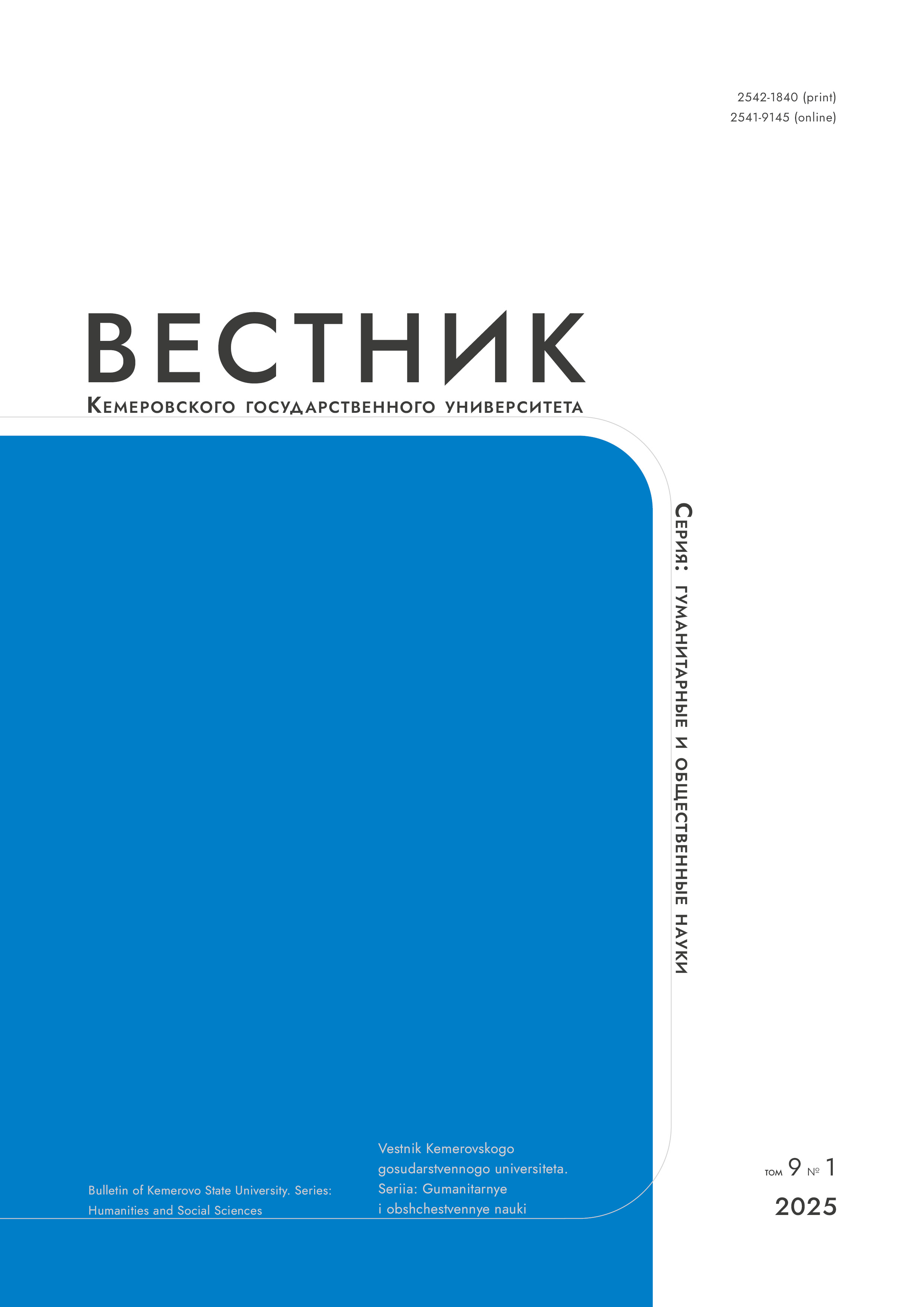Moscow, Russian Federation
The rapid development of modern society has triggered profound economic changes in all aspects of human life and state activity. These transformations give rise to a great deal of scientific research, in particular, on the study of the consequences of industrial revolutions. These revolutions changed social paradigms and caused critical shifts in the global economic landscape. Three important conceptual trends have emerged in the scientific study of industrial revolutions: evolutionary, cyclical, and systemic. These paradigms reflect the comprehensive nature of the industrial revolution with its profound transformations in the social, economic, technological, and cultural spheres. Throughout human history, five different industrial revolutions have marked epochal shifts in the trajectory of human civilization. The advent of the fifth industrial revolution (5IR) also brings about significant adjustments in law enforcement in general and in the technical and forensic support of crime detection and investigation, in particular. Big data analytics is a powerful tool that facilitates comprehensive analysis of complex data sets. Three-dimensional scanning technologies increase accuracy and objectivity in crime scene analysis and expertise. Blockchain technology ensures the immutability of evidence. In this context, the transforming potential of 5IR lies in its ability to revolutionize the tactics and techniques of crime detection and investigation. However, the abovementioned technological advances are accompanied by multidimensional ethical and legal challenges.
industrial revolutions, forensics, forensic science, digital technologies, digitalization
1. Toynbee A. Lectures on the industrial revolution in England: popular addresses, notes and other fragments. Cambridge University Press, 1884. https://doi.org/10.1017/CBO9781139094566
2. Lenin V. I. Complete works in fifty-five volumes. 5th ed. Moscow: Izd. polit. lit., 1967, vol. 2, 1895-1897, 696 c. (In Russ.)
3. Mantoux P. The industrial revolution in the eighteenth century. Moscow: Sotsekgiz, 1937, 440. (In Russ.)
4. Buldygin S. S. The concept of the industrial revolution: from appearance to the present day. Vestnik Tomskogo gosudarstvennogo universiteta, 2017, (420): 91-95. (In Russ.) https://doi.org/10.17223/15617793/420/12
5. Schumpeter J. A. Theory of economic development. Moscow: Eksmo, 2008, 864. (In Russ.)
6. Kuznets S. Secular movements in production and prices. Their nature and their bearing upon cyclical fluctuations. Boston: Houghton Mifflin, 1930, 536.
7. Frank A. G. The industrial revolution and Pax Britannica, 1770 to 1870. Dependent accumulation and underdevelopment. Palgrave Macmillan, London, 1979, 70-91. https://doi.org/10.1007/978-1-349-16014-3_4
8. Grinin L. E., Korotayev A. V. Macroevolution and the World-System: new facets of conceptualization. Istoriia i sovremennost, 2008, (1): C. 3-31. (In Russ.) https://elibrary.ru/jtxlxt
9. Khudokormov A. G. History of the second industrial revolution. Scientific Research of Faculty of Economics. Electronic Journal, 2022, 14(4): 24-41. (In Russ.) https://doi.org/10.38050/20783809-2022-14-4-24-41
10. Pogrebinskaya V. A. The second industrial revolution. Economic Journal, 2005, (2): 183-285. (In Russ.) https://elibrary.ru/mstbqd
11. Maltsev A. A. From the third technological revolution to the fourth: an overview of contemporary theoretical approaches and concepts. AlterEconomics, 2022, 19(1): 131-146. (In Russ.) https://doi.org/10.31063/AlterEconomics/2022.19-1.8
12. Maslov V. I., Lukyanov I. V. The fourth industrial revolution: origins and consequences. Bulletin of Moscow University. Series 27. Globalistics and geopolitics, 2017, (2): 38-48. (In Russ.) https://elibrary.ru/ytobwt
13. Averina I. S. Evolution of the "industrial revolution" phenomenon: prerequisites and factors. Vestnik Volgogradskogo gosudarstvennogo universiteta. Ekonomika, 2020, 22(4): 18-25. (In Russ.) https://doi.org/10.15688/ek.jvolsu.2020.4.2
14. Kokin A. V. Forensic expertise in the era of the fourth industrial revolution (industry 4.0). Theory and Practice of Forensic Science, 2021, 16(2): 29-36. (In Russ.) https://doi.org/10.30764/1819-2785-2021-2-29-36
15. Delgado Y., Price B. S., Speaker P. J., Stoiloff S. L. Forensic intelligence: data analytics as the bridge between forensic science and investigation. Forensic Science International: Synergy, 2021, 3. https://doi.org/10.1016/j.fsisyn.2021.100162
16. Geradts Z. Digital, big data and computational forensics. Forensic Sciences Research, 2018, 3(3): 179-182. https://doi.org/10.1080%2F20961790.2018.1500078
17. Big data analytics and computing for digital forensic investigations. 1st ed., eds. Satpathy S., Mohanty S. CRC Press, 2020, 234. https://doi.org/10.1201/9781003024743
18. Thomas A., Sobhana N. V. A survey on crime analysis and prediction. Materials Today: Proceedings, 2022, 58: 310-315. https://doi.org/10.1016/j.matpr.2022.02.170
19. Mugari I., Obioha E. E. Predictive policing and crime control in the United States of America and Europe: trends in a decade of research and the future of predictive policing. Social Sciences, 2021, 10(6). https://doi.org/10.3390/socsci10060234
20. Lukinsky I. S. Three-dimensional scanners as a means of fixing the inspection of the scene. Bulletin of economic security, 2022, (2): 112-114. (In Russ.) https://doi.org/10.24412/2414-3995-2022-2-111-114
21. Barazzetti L., Sala R., Scaioni M., Cattaneo C., Gibelli D., Giussani A., Poppa P., Roncoroni F., Vandone A. 3D scanning and imaging for quick documentation of crime and accident scenes. Sensors, and Command, Control, Communications, and Intelligence (C3I) Technologies for Homeland Security and Homeland Defense XI, vol. 835910, ed. Carapezza E. M. http://dx.doi.org/10.1117/12.920728
22. Esposito M., Sessa F., Cocimano G., Zuccarello P., Roccuzzo S., Salerno M. Advances in technologies in crime scene investigation. Diagnostics, 2023, 13(20). https://doi.org/10.3390/diagnostics13203169
23. Ragu G., Ramamoorthy S. A blockchain-based cloud forensics architecture for privacy leakage prediction with cloud. Healthcare Analytics, 2023, 4. https://doi.org/10.1016/j.health.2023.100220
24. Yadav A. K., Singh K., Amin A. H., Almutairi L., Alsenani T. R., Ahmadian A. A comparative study on consensus mechanism with security threats and future scopes: blockchain. Computer Communications, 2023, 201: 102-115. https://doi.org/10.1016/j.comcom.2023.01.018
25. Arens Iu. A., Katkova N. A., Khalimon E. A., Brikoshina I. S. The fifth industrial revolution - innovations in the field of biotechnologies and neural networks. E-Management, 2021, 4(3): 11-19. (In Russ.) https://doi.org/10.26425/2658-3445-2021-4-3-11-19


















